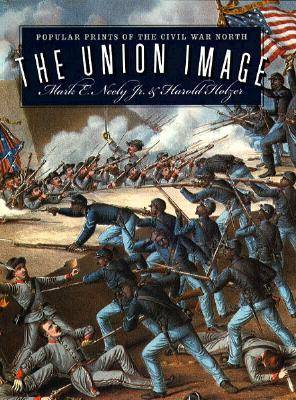Civil War America
2 total works
First published in 1987, The Confederate Image examines the popular lithographs and engravings cherished by Southerners during and after the Civil War. These images helped sustain and revive Southern identity following the collapse of the Confederacy. (Though, ironically, most were actually crafted by Northern artisans.) The book focuses on prints of the three most prominent Southern figures of the conflict--Robert E. Lee, Jefferson Davis, and Stonewall Jackson--but also discusses prints of other important Confederates as well as the contributions of the short-lived Southern Illustrated News.
""A well-researched and interesting sidelight into a world of illusion.""--New York Times Book Review
""More than just a picture book. . . . [It] tells a fascinating story of the creation of these images and how they added to or, at times, ran counter to the creation of the myth that is known as the Lost Cause.""--Chicago Tribune
|A first-time paperback edition of this 1987 classic, The Confederate Image presents and examines the popular lithographs and engravings cherished by Southerners during and after the Civil War. This book is beautifully illustrated with images that reveal how the war has been remembered through history.
""A well-researched and interesting sidelight into a world of illusion.""--New York Times Book Review
""More than just a picture book. . . . [It] tells a fascinating story of the creation of these images and how they added to or, at times, ran counter to the creation of the myth that is known as the Lost Cause.""--Chicago Tribune
|A first-time paperback edition of this 1987 classic, The Confederate Image presents and examines the popular lithographs and engravings cherished by Southerners during and after the Civil War. This book is beautifully illustrated with images that reveal how the war has been remembered through history.
During the American Civil War, popular prints were frequently used to depict, define, and celebrate both the Union and Confederate causes. The Union Image explores the graphic arts that portrayed the Northern side--both in patriotic pictures and newsworthy illustrations published while the war raged and in retrospective images issued years later as major weapons in the postwar battle to shape the national memory.
Created not for connoisseurs but for ordinary Americans, these engravings and lithographs depicted battles, commanders, life in camp and on campaign, the sacrifices of home and hearth, and an election campaign that roiled the North in the midst of the war. This volume reproduces nearly 150 original prints, allowing readers to trace changes in Northern public opinion, from Northerners' early high hopes for success to their appreciation for the ultimate victors, the real men of war, Ulysses S. Grant and William T. Sherman.
Created not for connoisseurs but for ordinary Americans, these engravings and lithographs depicted battles, commanders, life in camp and on campaign, the sacrifices of home and hearth, and an election campaign that roiled the North in the midst of the war. This volume reproduces nearly 150 original prints, allowing readers to trace changes in Northern public opinion, from Northerners' early high hopes for success to their appreciation for the ultimate victors, the real men of war, Ulysses S. Grant and William T. Sherman.

